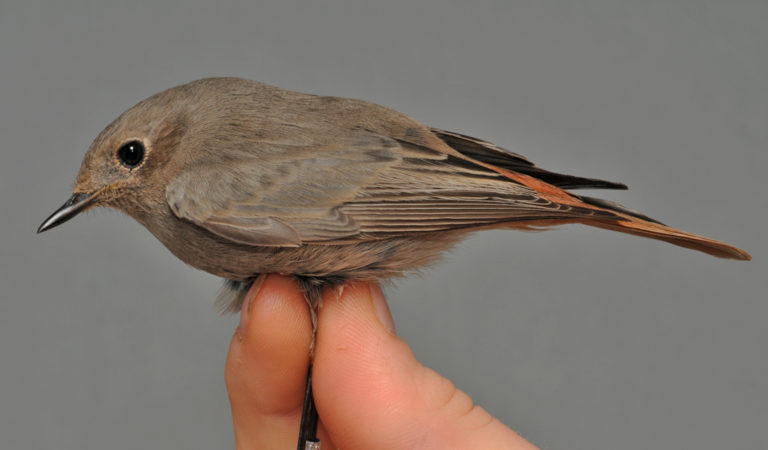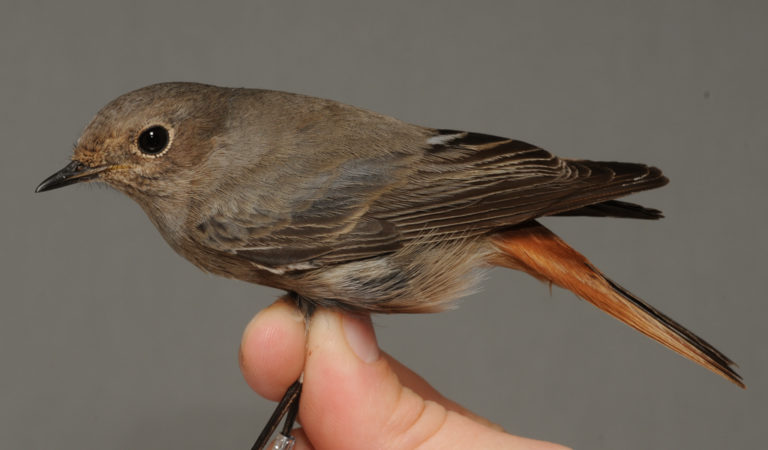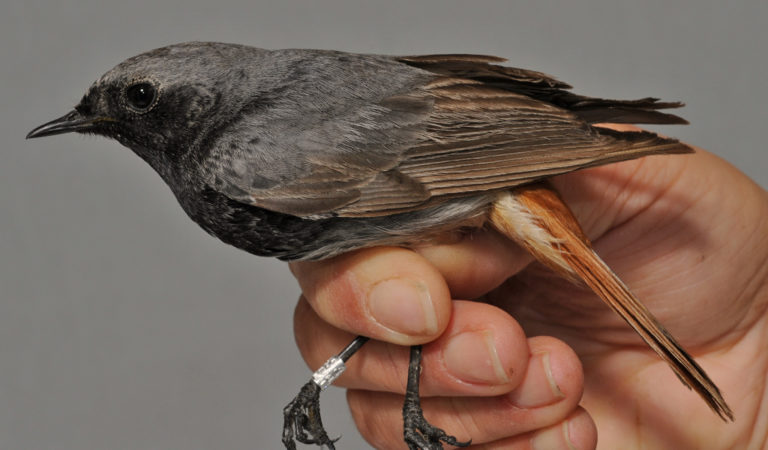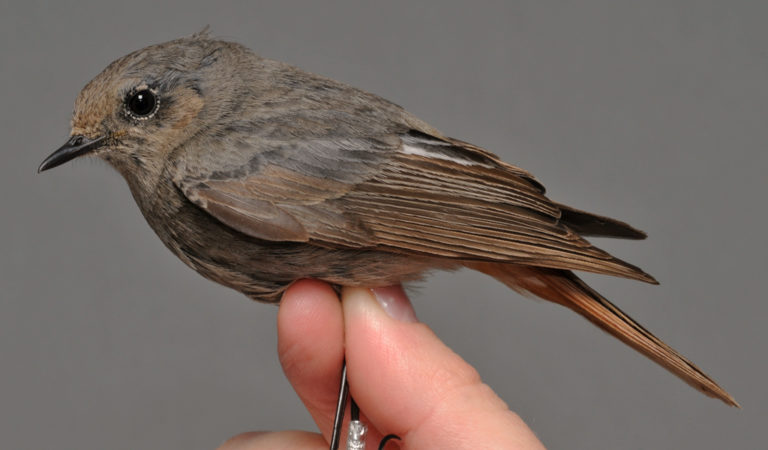

Black redstart
SEXING:
Slightly complex due to dimorphism in young males. Always start with ageing! Once reliably aged, all adult (2cy autumn and onwards) and some first year birds can be sexed using the below criteria. Since Black Redstarts do not have a pre-breeding moult, sexing in spring is based on the same characters as during autumn.
1cy / 2cy spring: In the post-juvenile moult, most 1cy male (called ”cairii-morph” males) attain a compleatly greyish brown plumage, most often inseparable from females. Such individuals are always left un-sexed unless a TT (or S) was included in the post-juvenile moult (quite a few 1cy include one or two (or all three) TT and, more rarely, single SS). Such post-juvenile TT (or S) will most often reveal the pattern of the next feather generation: edged silvery white in males, and edged buffish in females. Note, however, that an unknown portion of post-juvenile male TT does not seem to show the white edges. This means that great care should be taken when identifying females, and preferably more than one post-juvenile feather should be present (and lack white).
Additionally: c. 12% of 1cy males (known as ”paradoxus-morph”) develop a blackish body in the post-juvenile moult, similar to adult males (though wing is still unmoulted and typically juvenile) and are readily sexed. Intermediate birds (with partially grey/black plumage) occurs and are also readily recognizable as males.
2cy autumn / 3cy+: Easily sexed due to the black body and silvery white edges to TT and SS of males.

1cy female November. All three TT were replaced in the post-juvenile moult and show a typical female pattern with buffish edges. This bird has renewed all GC, and female post-juvenile GC are, on average, slightly paler than in males. However, individual variation makes this character difficult to use in practice. [CN89540]

1cy male (cairii) October. Innermost two TT are post-juvenile (in contrast to the juvenile longest T) and the shorter one shows a typical male pattern with silvery white edges. The same pattern would also have shown on any post-juvenile SS, if present. Birds with this tertial pattern should safely be sexed as males, but it should be noted that the central T, although being post-juvenile, still lacks white. If the shorter T (with the white edge) would have been unmoulted juvenile, such a bird would easily have been mistaken for a female. In order to reduce such a risk, it is preferable to base the sexing of females on more than one postjuvenile feather. [CL25200]

2cy male (paradoxus) April. A small portion of young males receive a black, adult-like, body plumage already in the post-juvenile moult. Such birds (known as the paradoxus morph) are easily sexed. And readily told from adult male on their juvenile wing. [CS00656]

2cy male (intermediate morph) April. A few males are, to a varying extent, intermediate between the cairii and the paradoxus morphs, showing a mixture of brown, sooty grey or black feathering. Note also the two inner TT that were replaced in the post-juvenile moult and show a typical male pattern with silvery white edges. [CN90251]
Ringers’ DigiGuide is sponsored by: